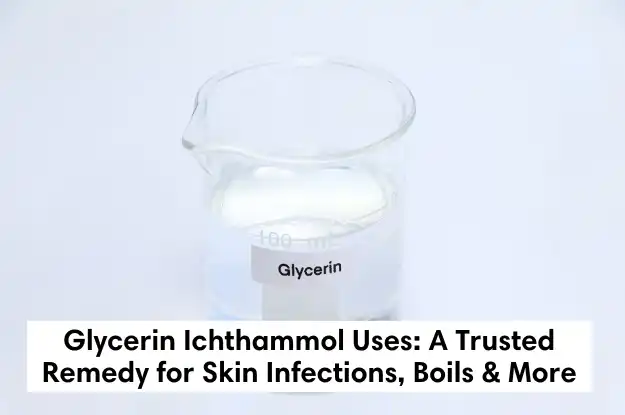What Is Glycerin Ichthammol and Why It’s Still Used Today
Glycerin ichthammol is a classic topical ointment that continues to be relevant in modern wound care for its powerful drawing and anti-inflammatory properties. Often referred to as “black ointment” due to its dark color, it is a mixture of ichthammol (a sulfonated shale oil derivative) and glycerin. While it might not be a product you hear about every day, glycerin ichthammol uses remain incredibly versatile across medical, home, and veterinary applications. Its natural antiseptic qualities make it suitable for treating minor infections, boils, abscesses, and skin eruptions, especially when used as part of a sterile dressing.
Understanding Ichthammol: Its Origins and Therapeutic Properties
Ichthammol, also known as ammonium bituminosulfonate, is a sulfonated oil derived from shale rock and has been used for over a century in dermatology and wound care. Its distinct dark color and strong odor come from its natural origin, but its therapeutic value lies in its antiseptic, anti-inflammatory, and mild analgesic properties. In its raw form, ichthammol has been shown to reduce bacterial growth and ease localized swelling, making it an effective ingredient in a variety of topical preparations.
Traditionally, it has been applied to inflammatory skin conditions such as eczema, psoriasis, and acne, as well as localized infections like furuncles or carbuncles, where its ability to promote drainage can accelerate recovery. One of the most interesting characteristics of ichthammol is its ability to increase circulation to the area of application, which helps the body’s natural healing process.
While often paired with glycerin in ointments, ichthammol by itself plays a vital role in many compounded and over-the-counter formulations. When evaluating products that contain ichthammol, it’s helpful to understand the concentration level, as higher strengths (e.g., 20%) may offer stronger effects but could increase the chance of skin sensitivity. As with any topical compound, it’s wise to consult a healthcare provider when using ichthammol as part of a treatment plan for recurring or severe conditions.
How to Apply Ichthammol Dressing Correctly
Proper application enhances the effectiveness of this ointment. Start by gently cleaning the affected area with mild soap and water. Then, apply a thin layer of the ointment directly on the spot, cover it with sterile gauze, and secure it with a bandage. This method of using ichthammol dressing helps maintain moisture while promoting the extraction of pus or foreign material. The dressing can be changed once or twice daily until the infection subsides or improves noticeably.
Glycerin Ichthammol for Boils and Abscesses
Among its most recognized uses is its ability to relieve painful skin abscesses and boils. Glycerin ichthammol for boils and abscesses works by drawing pus and infection closer to the skin surface, helping the boil come to a head and drain naturally. It reduces inflammation, relieves pressure, and accelerates healing. This makes it particularly useful for people who prefer traditional treatments before turning to antibiotics or surgical drainage. Many users find comfort in its warming sensation, which signals active circulation and healing.
Safety and Side Effects of Ichthammol
Though generally well tolerated, users should still be aware of safety and side effects of ichthammol ointment. Mild irritation, redness, or skin sensitivity may occur, particularly if applied to broken skin or used too frequently. It’s recommended to do a patch test before using it on larger areas. This ointment is strictly for external use—keep it away from eyes, mucous membranes, and open wounds. Consult a healthcare provider if symptoms persist or worsen, or if an allergic reaction occurs.
Where to Find Glycerin Ichthammol Products
Although not as widely advertised as modern skin treatments, you can still find glycerin ichthammol products at local pharmacies, online stores, or specialized medical suppliers. Products vary in ichthammol concentration—commonly 10% or 20%—so it’s important to check the label for appropriate usage. For those exploring reliable options, you can refer to complete product details available through verified sources offering in-depth specifications and usage recommendations. This ensures you are using a formulation that matches your skin type and medical needs.
Conclusion: Why Glycerin Ichthammol Remains a Go-To Remedy
Despite the rise of newer topical antibiotics and modern skin treatments, glycerin ichthammol uses still have a place in natural and clinical skincare. From treating boils and ingrown toenails to managing minor infections and splinters, its utility is broad and time-tested. Easy to use, affordable, and effective, this ointment bridges traditional remedies and modern dermatological care. As always, users should follow safety instructions and consult a professional for persistent or severe symptoms. To learn more about how to choose and apply the right formulation, or to explore related skin care essentials, visit the linked resource above.
For more Article : CLICK HERE




